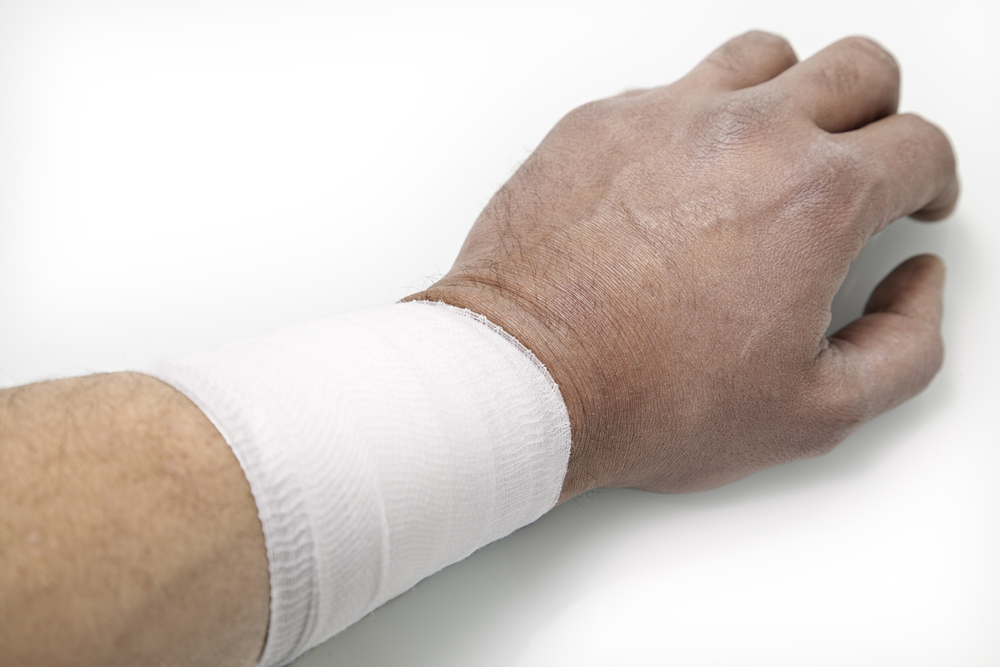What Happens During a Pain and Suffering Settlement Hearing in Pennsylvania?

Pain and Suffering Settlement hearings provide a forum for the court to approve the covenant between the plaintiff and defense that resolves the case. If the judge accepts the agreement, he dismisses the claim. At that point, further litigation of the issue is barred unless one of the parties violates the terms. In that case, the other party can appeal to the court to enforce the settlement.
Judges review the settlement in its entirety before deciding if it is acceptable. The agreement must adhere to all applicable laws and be fair to win approval. While many legal standards have clear lines, the question of what is fair has a subjective component. What is fair in one personal injury case may be inequitable in another.
For example, the pain and suffering of the victim differ in each personal injury case. While one plaintiff may have suffered little physical pain, another may have languished in intense agony that responded only partially to medication. Also, one victim may have experienced pain for a short time, while another may be afflicted by chronic injuries that last a lifetime.
Therefore, settlement agreements must specifically address the level, length, and type of pain and suffering endured by the injured party.
What Standards Does the Court Require for Personal Injury Settlement Approval in Pennsylvania?
During the settlement hearing, the judge reviews the case to ensure that the agreement meets legal standards. Many of these criteria are straightforward. However, the pain and suffering portion of the settlement requires a more detailed analysis.
Some of the questions the judge seeks answers to include the following:
Was the Claim Filed Within the Statute of Limitation Period?
Pennsylvania law establishes a two-year statute of limitations on personal injury claims. This requires the plaintiff to file the claim within two years of the date of the incident. Once the claim is timely filed, it does not matter how long it takes to resolve the case.
The law provides for exceptions to the statute of limitations:
The Plaintiff Was a Minor At the Time of the Injury
When a minor suffers a personal injury, the statute of limitations “clock” is tolled until the victim turns 18 or becomes an emancipated minor. For example, if the injury happened two and a half years before the plaintiff’s 18th birthday, the statute of limitation extends to four and a half years after the incident or the plaintiff’s twentieth birthday.
The Defendant Left the State
Defendants need to remain in the state to be served with a lawsuit. If the defendant leaves Pennsylvania, the clock is tolled until he returns and can be served. However, since insurance companies are usually the defendants in personal injury cases, this situation rarely comes into play.
The Defendant Evaded Service
Even if the defendant remained in the state, the clock is tolled if he evades service. When dealing with insurance companies, this never happens. However, it could be if you were suing the liable person directly. For example, if you are suing for injuries because of an assault by a person uncovered by insurance, it's possible that person may hide to avoid being taken to court.
The Plaintiff Became Aware of the Injury After the Incident
Some injuries lay dormant for long periods. For example, if a plaintiff developed cancer from contaminated drinking water, symptoms may not show for years after his exposure. In that case, the statute of limitations begins on the day the victim becomes aware of the injury.
Does the Settlement Conform to the State’s Modified Comparative Negligence Standard?
Pennsylvania personal injury law enforces a 51% bar rule. According to this dictum, no one can collect in a personal injury case if found more than 51% at fault. Therefore, when lawyers calculate damages, they must adhere to the 51% bar rule. In essence, the agreement must stipulate that the defendant is more than 51% at fault.
In addition, the settlement must conform to Pennsylvania’s modified comparative negligence calculation standard. According to Pennsylvania law, when the plaintiff is partly at fault, her compensation is reduced by the percentage of shared liability.
For example, if the plaintiff has $100,000 in damages but is 20% at fault, her damages must be reduced to $80,000.
Does the Settlement Violate Damage Caps?
Pennsylvania imposes no caps on personal injury damages unless the defendant is a state or local government. Damages against the Commonwealth cannot exceed $250,000, and personal injury compensation from a local government must remain under $500,000.
For instance, a victim struck by a municipal bus may be limited to an award of less than $500,000.
Is the Settlement Fair?
Judges also ask themselves if the settlement is fair in view of the circumstances. Does it adequately compensate the victim for all injuries? Are future expenses related to the accident included? Is modified comparative negligence fairly established? Has pain and suffering been adequately addressed?
The question of pain and suffering compensation is often one of the most contentious in settlement negotiations. Because no cap exists for Pennsylvania personal injury awards, the amount of pain and suffering compensation can be far greater than medical expenses, lost income, and other economic damages. Accordingly, plaintiffs' attorneys focus on generating evidence that proves their client’s pain and suffering and justifies a substantial settlement or award.
How Damages Are Calculated in Pain and Suffering Settlement?
Personal injury plaintiffs in Pennsylvania can seek pain and suffering damages for any type of injury from all types of incidents. The relevant factors in pain and suffering damages are related to the victim’s hardship and distress rather than the defendant's actions. The defendant’s actions are the focus when determining comparative negligence and punitive damages.
Pain and suffering consist of physical agony, emotional misery, and the diminishment of a person’s life. For instance, physical suffering includes pain from broken bones, burns, back injuries, and other ailments resulting from the incident.
In addition to physical pain, a victim may suffer from isolation and depression due to a long recovery period. Imagine spending weeks or months languishing in a hospital and then being trapped in your home for an even longer time while healing. Any reasonable person would suffer emotionally from such a long convalescence.
Also, physical injuries leave scars and disfigurements that cause physical handicaps and social disability, all of which increase a person’s pain and suffering.
Accidents also expose victims to post-traumatic stress disorder. For instance, a severe, near-fatal accident may leave a person’s body and mind battered. They may have intrusive thoughts and flashbacks, anxiety attacks, and other forms of emotional distress that interrupt their lives.
Calculating Pain and Suffering Damages in Pennsylvania
Because pain and suffering damages correspond to a person’s experience rather than a straightforward economic loss, they require more effort to quantify. For this reason, the law establishes a list of factors to consider when calculating pain and suffering damages. By assigning a value to each relevant element, courts can come to a reasonable conclusion as to the appropriate pain and suffering settlement figure.
Factors considered in the calculation of pain and suffering damages include the following:
- The type of injuries
- The victim’s age
- The severity of the injuries
- The degree of permanent injury, such as scarring and disfigurement
- The impact on the plaintiff’s daily life
- Loss of general well-being
- Any emotional trauma, such as stress, anguish, grief, pain, and anxiety
- The length of the recovery period
Determining a Dollar Figure for Each Element in Pennsylvania
As you can see from the above list, the criteria for pain and suffering settlement is subjective and variable. How much damage a person suffers depends on the severity of the injury, their health, their financial condition, and their personal circumstances. Therefore, courts need evidence of the impact on the victim to make a determination.
To make their pain and suffering understandable, plaintiffs and their lawyers must communicate the challenges the victim experienced. Doing so requires concrete examples of the injury’s effects. In most cases, these consist of a variety of incidents and examples. To ensure plaintiffs remember these key illustrations, lawyers recommend they keep a pain and suffering journal.
An effective journal tracks how the plaintiff’s injuries affected her daily activities and occluded productive, enjoyable activities. Some of the crucial items to include in the pain and suffering journal include the following:
- Pain level on a 1 to 10 scale
- Physical and emotional symptoms of the injury
- The duration of the symptoms
- Specific activities the injury makes impossible
- Medication side effects
- Depression or anxiety
- Missed work
- Missed personal life activities
- Impact on relationships
- Loss of life enjoyment
In addition to the journal, plaintiffs should retain photographs of any visible injuries and copies of all documents that substantiate the accounts included in the journal. This journal must remain limited to recording experiences relevant to the case. It may be submitted as evidence, so it should contain no private information or personal revelations.
Pain and suffering make up a substantial portion of damages in many personal injury cases. Because quantifying them relies heavily on documenting and proving the plaintiff’s unique experiences, recording the injury’s impacts goes a long way toward justifying substantial pain and suffering compensation.
At the Pain and Suffering settlement hearing, the judge reviews the settlement and determines if it adheres to the law and provides an equitable solution in view of the circumstances. When acceptable, the judge approves the agreement and dismisses the case, allowing the plaintiff to receive the agreed-upon compensation.
Mattiacci Law’s legal team works tirelessly to obtain the maximum pain and suffering compensation for their clients in Pain and Suffering Settlement hearings. Plaintiffs deserve full compensation for all the impacts of an injury. Contact Mattiacci Law to find out more about how much pain and suffering compensation you may be eligible to receive.
Related Content: What to Expect from Pain & Suffering Settlements in PA
